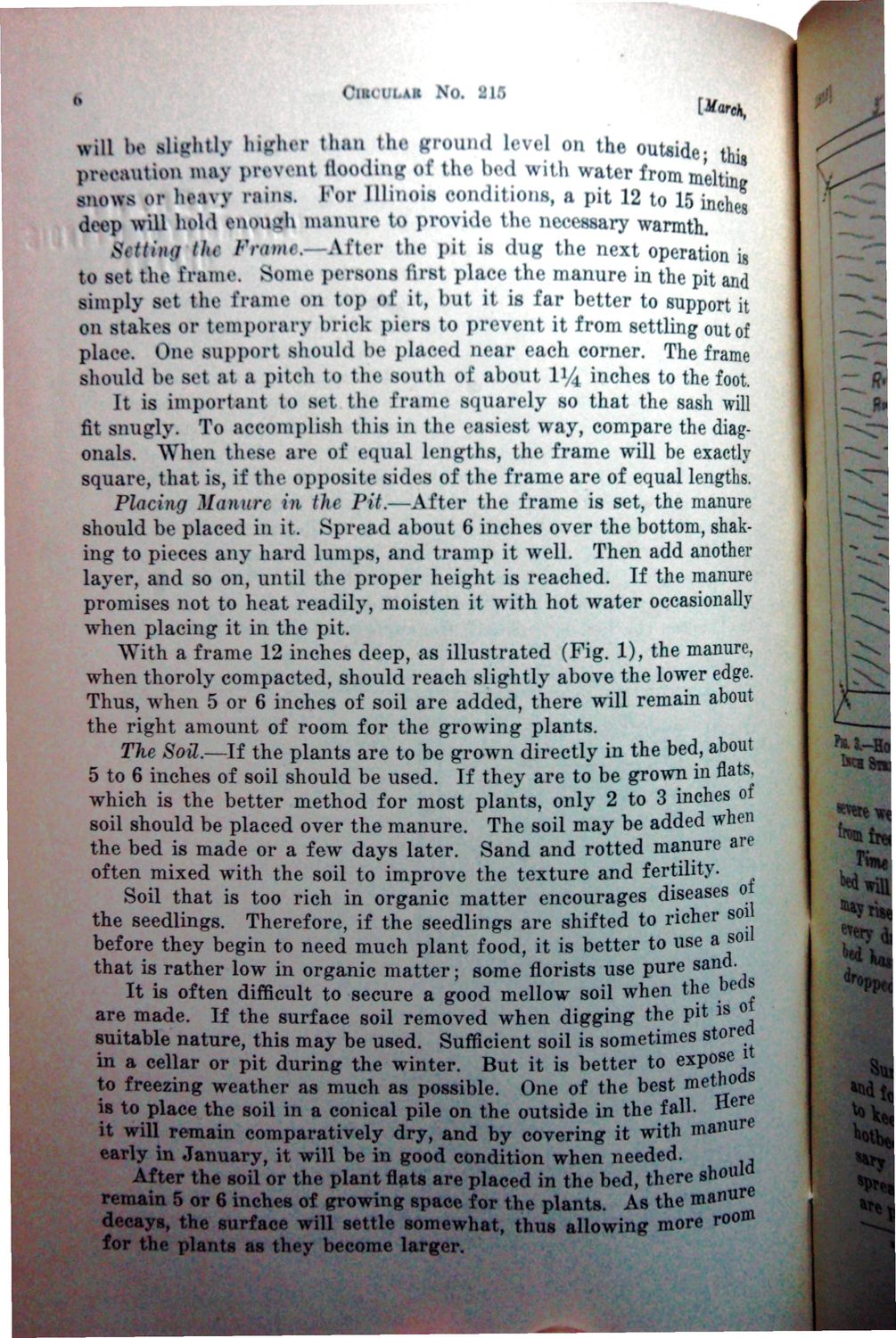| |
| |
Caption: War Publications - WWI Compilation 1923 - Article 45
This is a reduced-resolution page image for fast online browsing.

EXTRACTED TEXT FROM PAGE:
c> ClICULAB NO. 215 will be slightly lii^hrr than the ground level on the outsidethig precaution may pi w e n t Hooding of the bed with water from melting snows or heavy rams. I\>r Illinois conditions, a pit 12 to 15 inches deep will hold enough manure to provide the necessary warmth. Setting tin' Fnwu\.—After the pit is dug the next operation i* to set the frame, Some persons first place the manure in the pit and simply sot the frame on top of it, but it is far better to support it on stakes or temporary brick pirrs to prevent it from settling out of place. One support should be placed near each corner. The frame should be set at a pitch to the south of about V/± inches to the foot. It is important to set the frame squarely so that the sash will fit snugly. To accomplish this in the easiest way, compare the diagonals. When these are of equal Lengths, the frame will be exactly square, that is, if the opposite sides of the frame are of equal lengths. Placing Manure in the Pit.—After the frame is set, the manure should be placed in it. Spread about 6 inches over the bottom, shaking to pieces any hard lumps, and tramp it well. Then add another layer, and so on, until the proper height is reached. If the manure promises not to heat readily, moisten it with hot water occasionally when placing it in the pit. With a frame 12 inches deep, as illustrated (Fig. 1), the manure, when thoroly compacted, should reach slightly above the lower edge. Thus, when 5 or 6 inches of soil are added, there will remain about the right amount of room for the growing plants. The SoU.—U the plants are to be grown directly in the bed, about 5 to 6 inches of soil should be used. If they are to be grown in flats, which is the better method for most plants, only 2 to 3 inches of soil should be placed over the manure. The soil may be added when the bed is made or a few days later. Sand and rotted manure are often mixed with the soil to improve the texture and fertility. Soil that is too rich in organic matter encourages diseases o the seedlings. Therefore, if the seedlings are shifted to richer soil before they begin to need much plant food, it is better to use a soi san that is rather low in organic matter; some florists use pure ^' e s It is often difficult to secure a good mellow soil when the » s are made. If the surface soil removed when digging the pit * ° suitable nature, this may be used. Sufficient soil is sometimes store ex 0 in a cellar or pit during the winter. But it is better to V ?* I to freezing weather as much as possible. One of the best metho s e is to place the soil in a conical pile on the outside in the fall. l* it will remain comparatively dry, and by covering it with manur early in January, it will be in good condition when needed. , After the soil or the plant flats are placed in the bed, there shouia remain 6 or 6 inches of growing space for the plants. As the manure decays, the surface will settle somewhat, thus allowing more room for the plants as they become larger.
| |